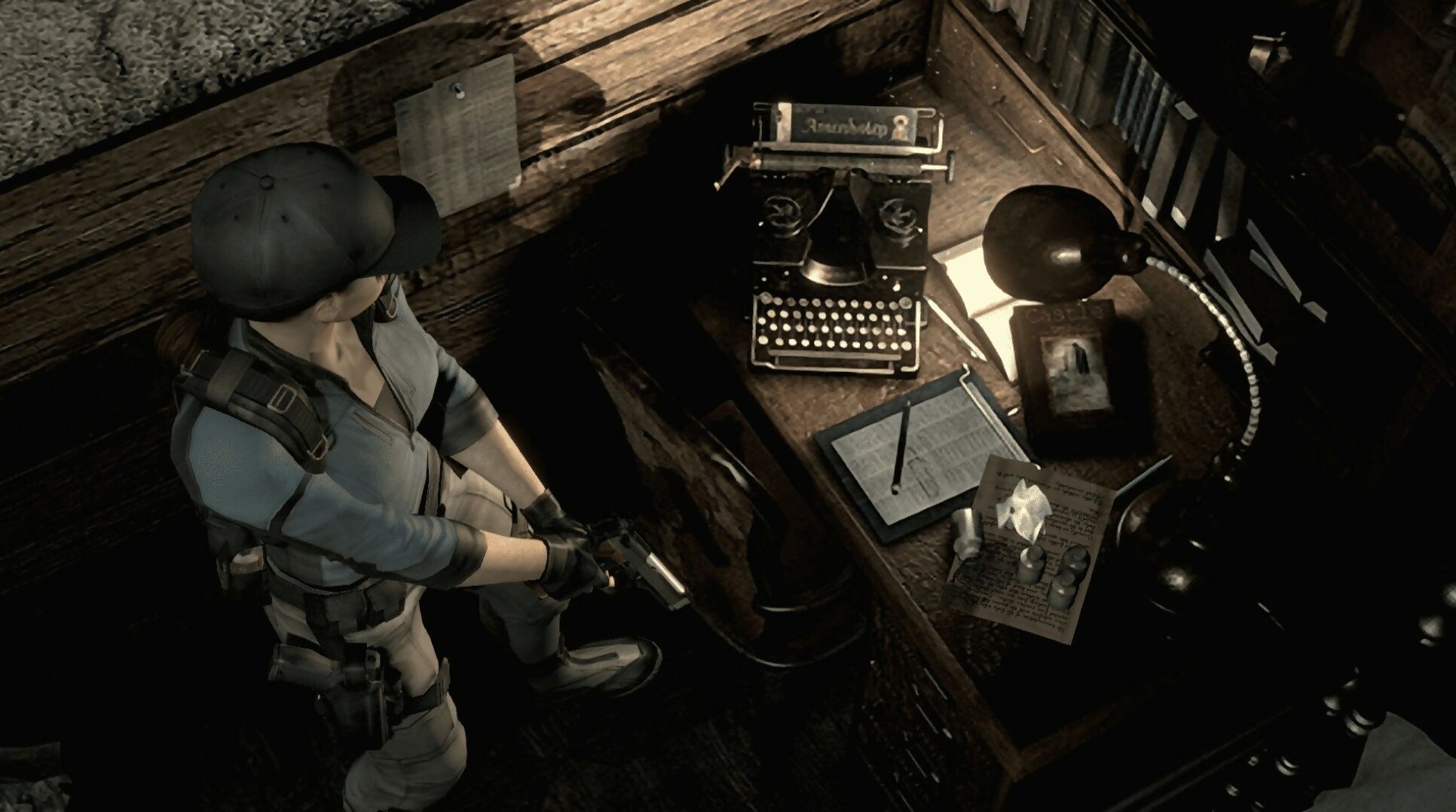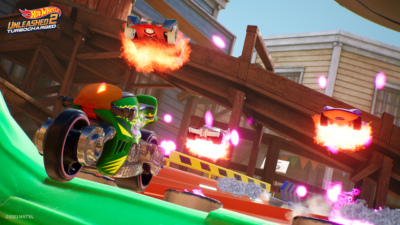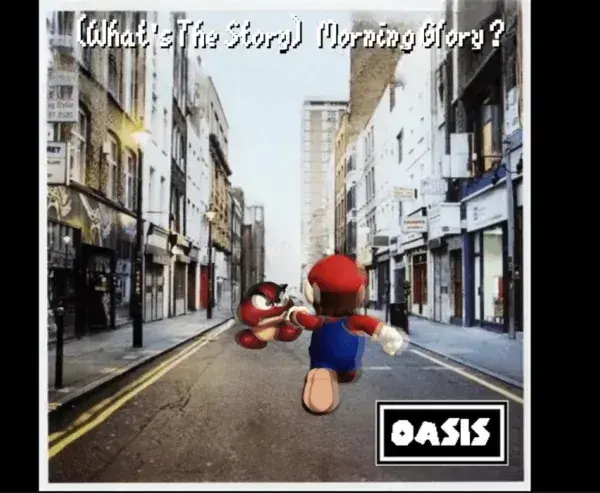
Resident Evil broke the mode in the 1990s, but its save rooms provided a welcome, vital respite from the shocks.
Save rooms keep you safe. That’s the general rule anyway, and it’s one that the Resident Evil series (alongside countless other survival horror games it inspired) has followed for over three decades. Capcom understood the importance of giving players a reprieve following moments of high anxiety, you see, letting them catch their breath after escaping, say, a surprise zombie attack or boss fight against some kind of giant mutant abomination.
The beauty of save rooms is that while Resident Evil itself may have often changed its identity, the simple sight of a typewriter in a room remains comforting all these years later.
The first time anyone experienced the relief this treasured place brings was, of course, in Resident Evil’s Spencer Mansion. Shortly after finding refuge in its grand hall and being grinned at by a flesh-eater whose lips look almost too red, you guide Jill or Chris into solving a handful of puzzles until eventually finding a room with just a typewriter and an item box inside. You can reorganise your inventory as much as you like, but hopefully you’ve picked up one of the many Ink Ribbons littered around by this point. Otherwise the respite you should be enjoying is tainted by the knowledge that your name, and the progress that goes with it, won’t be etched onto the paper and stored in the event of your death. Even then, deciding when to best save using an Ink Ribbon comes with its own degree of risk.

The glorious cover art from the original Resident Evil. Credit: Capcom.
It may seem cruel by today’s standards, but manual saving was the norm back in the PlayStation era – to the extent that picking up where you left off was a luxury afforded only to those fortunate enough to own a memory card. The first Resident Evil smartly capitalised on this model, going so far as to build a literal save room into the body of the game to add further tension, as opposed to simply asking whether you wanted to save between chapters. There are no codes you can input to reinstate progress, either. Rather, the onus is entirely on you to pick your save points wisely.
Ink Ribbons were ultimately done away with by the time of Resident Evil 4’s release, being yet another indication of that game’s swerve to a more action focus instead of outright survival. The purity of the save room remains, except now they can be situated anywhere, from a rickety outhouse, a dimly lit mine, and all the way up to a lavish castle dining room, due to the environmental variety present in Leon’s mission to rescue the president’s daughter in rural Spain. It wasn’t until the less fondly remembered Resident Evil 5 and 6 that save rooms would be totally abandoned.

It’s no coincidence, then, that with the arrival of Resident Evil 7: Biohazard, a game openly intended to return the series back to its survival horror roots, that save rooms returned. They were a franchise staple and a huge part of its constant tussle between tension and release, after all, as is the music that accompanies each of the spaces when you enter them. Though appropriately haunting, the dull acoustic guitar plucking coupled with strings you hear when entering a save room in the first Resident Evil set a precedent for the series’ effective use of audio cues to ease stress. That’s why, where a save room exists in a Resident Evil game, so does an eerily calming musical motif. Arguably, though, none have ever bettered composer Seiko Kobuchi’s original Safe Haven theme.
The concept of a safe and/or save room may have been born out of Capcom’s need to work around the PlayStation’s limited RAM capability, but they’ve since grown to carry a legacy much larger than just Resident Evil. Whether used as a way to give Left 4 Dead’s party of survivors a chance to restock in between zombie-riddled locations, offer a method of travel à la bonfires in Dark Souls, or to further the concept of a make-believe dream world as seen in The Evil Within’s portal realm, offering players moments of respite as well as effective scares is a useful weapon in any good scary game’s toolbox.

As time has gone on, some developers have continued to toy around with a save room’s rule set. At their most cruel, for instance, certain games will betray the trust they’ve built up with players by letting whatever monster would typically claw at the door break through – the PROJECT ZERO series being a prime example. Other titles like Hollow Knight have doubled up on the purpose of such a location, using it as a storytelling device to let players engage NPCs and educate themselves with pieces of lore. For horror veterans, though, they’ll always represent that brief moment of relief before venturing back out to see what nightmares lie beyond the door.





